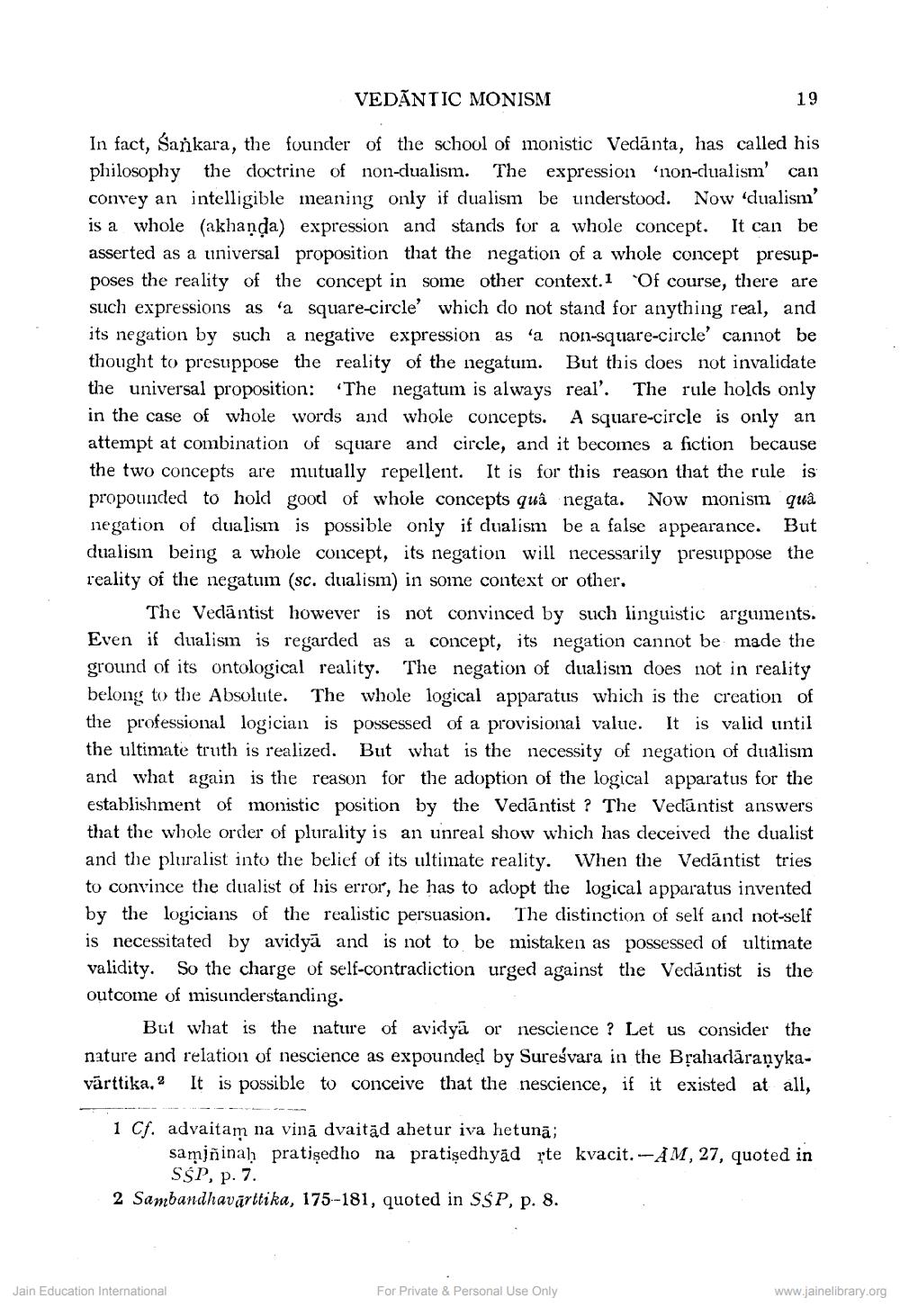________________
VEDÃNTIC MONISM
19
In fact, Sankara, the founder of the school of monistic Vedānta, has called his philosophy the doctrine of non-dualism. The expression non-dualism' can convey an intelligible meaning only if dualism be understood. Now "dualism' is a whole (akhanda) expression and stands for a whole concept. It can be asserted as a universal proposition that the negation of a whole concept presupposes the reality of the concept in some other context.1 'Of course, there are such expressions as a square-circle' which do not stand for anything real, and its negation by such a negative expression as a non-square-circle' cannot be thought to presuppose the reality of the negatum. But this does not invalidate the universal proposition: The negatum is always real'. The rule holds only in the case of whole words and whole concepts. A square-circle is only an attempt at combination of square and circle, and it becomes a fiction because the two concepts are mutually repellent. It is for this reason that the rule is propounded to hold good of whole concepts quâ negata. Now monism quâ negation of dualism is possible only if dualism be a false appearance. But dualisin being a whole concept, its negation will necessarily presuppose the reality of the negatum (sc. dualism) in some context or other,
The Vedāntist however is not convinced by such linguistic arguments. Even if dualism is regarded as a concept, its negation cannot be made the ground of its ontological reality. The negation of dualism does not in reality belong to the Absolute. The whole logical apparatus which is the creation of the professional logician is possessed of a provisional value. It is valid until the ultimate truth is realized. But what is the necessity of negation of dualism and what again is the reason for the adoption of the logical apparatus for the establishment of monistic position by the Vedāntist? The Vedāntist answers that the whole order of plurality is an unreal show which has deceived the dualist and the pluralist into the belief of its ultimate reality. When the Vedāntist tries to convince the dualist of his error, he has to adopt the logical apparatus invented by the logicians of the realistic persuasion. The distinction of self and not-self is necessitated by avidyā and is not to be mistaken as possessed of ultimate validity. So the charge of self-contradiction urged against the Vedāntist is the outcome of misunderstanding.
But what is the nature of avidyā or nescience ? Let us consider the nature and relation of nescience as expounded by Sureśvara in the Brahadaranykavārttika, 2 It is possible to conceive that the nescience, if it existed at all,
1 Cf. advaitam na vinā dvaitad ahetur iva hetunā;
samjñinah pratişedho na pratişedhyad rte kvacit.-- AM, 27, quoted in
SŚP, p. 7. 2 Sambandhavarttika, 175-181, quoted in SŚP, p. 8.
Jain Education International
For Private & Personal Use Only
www.jainelibrary.org




